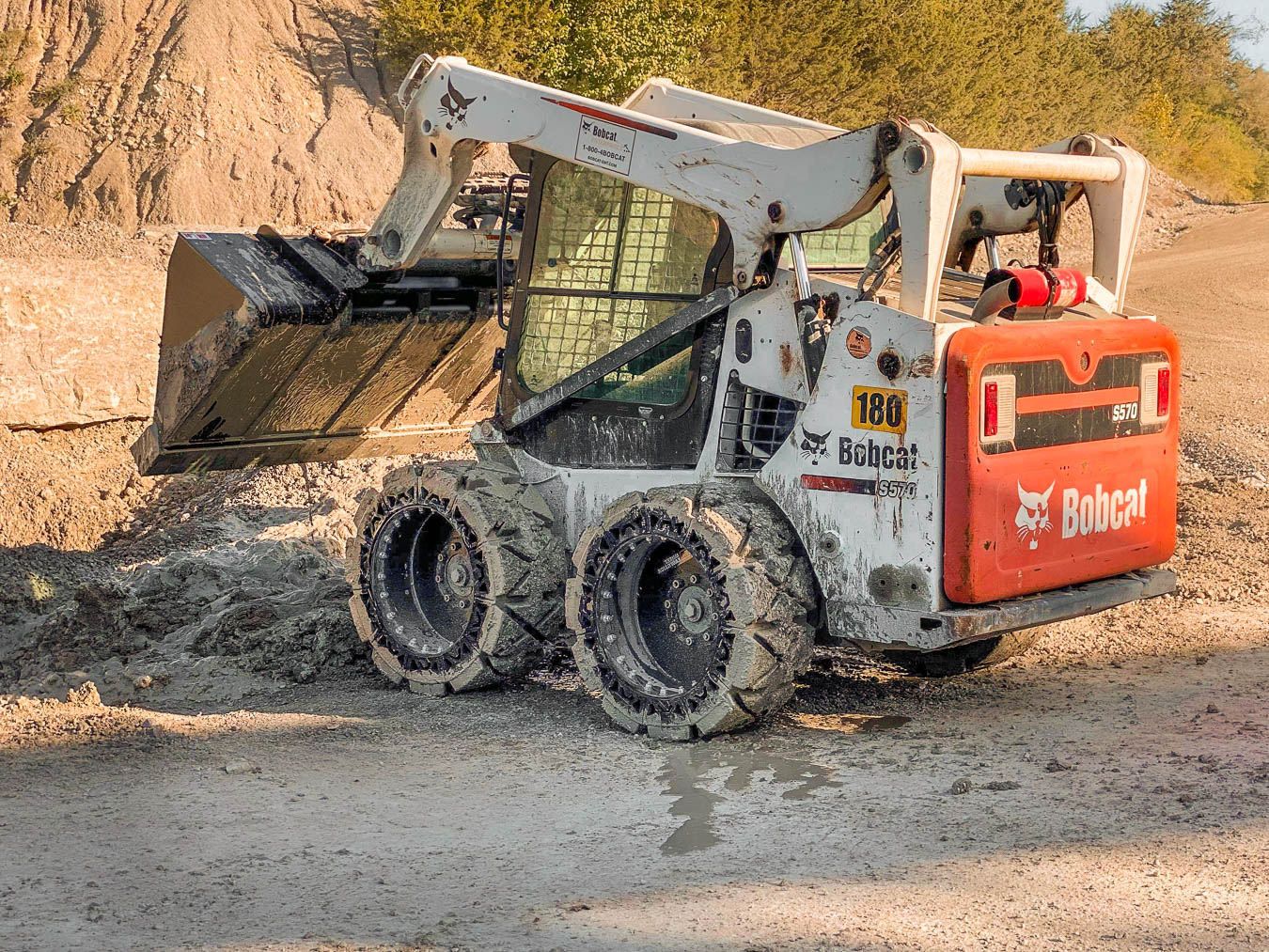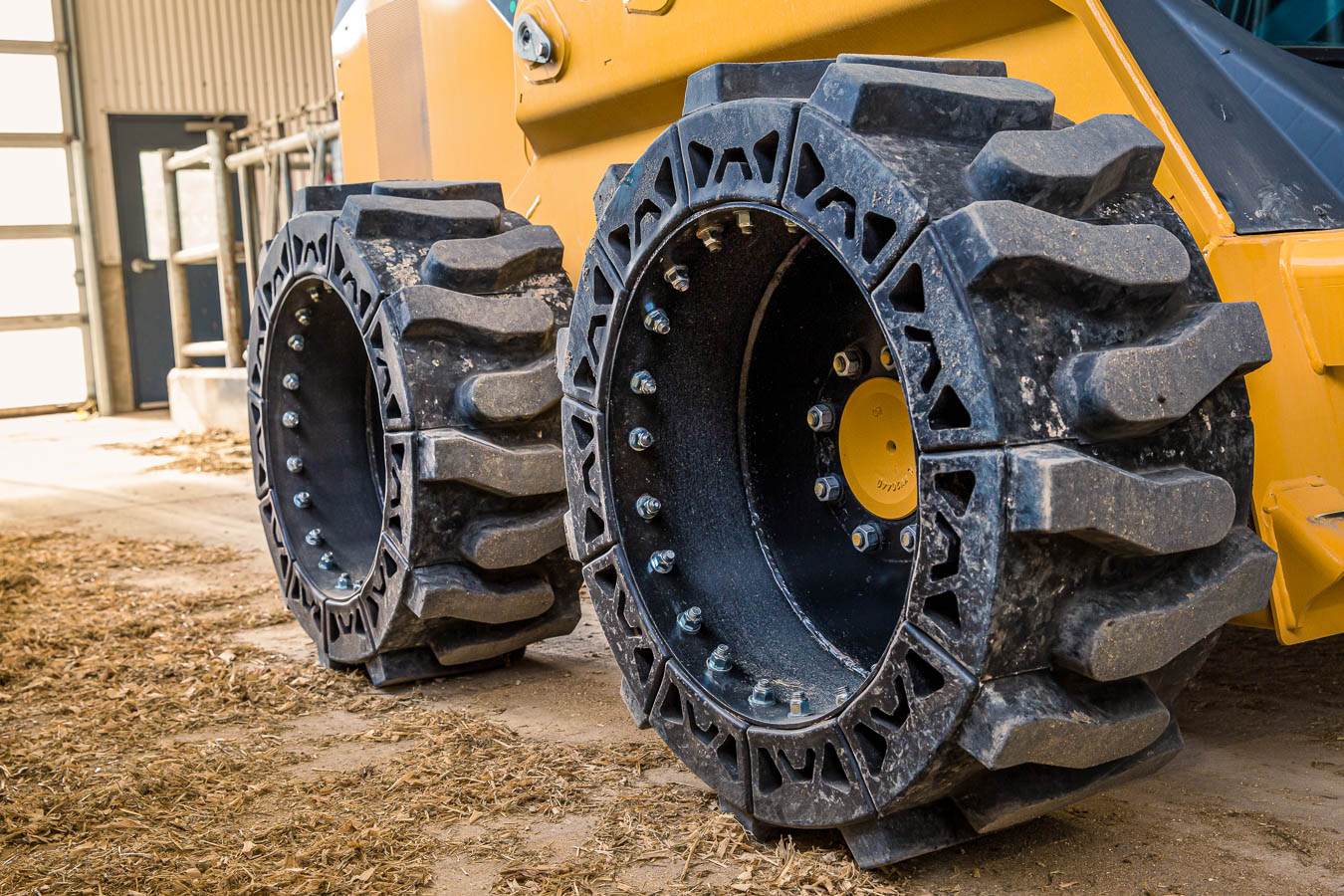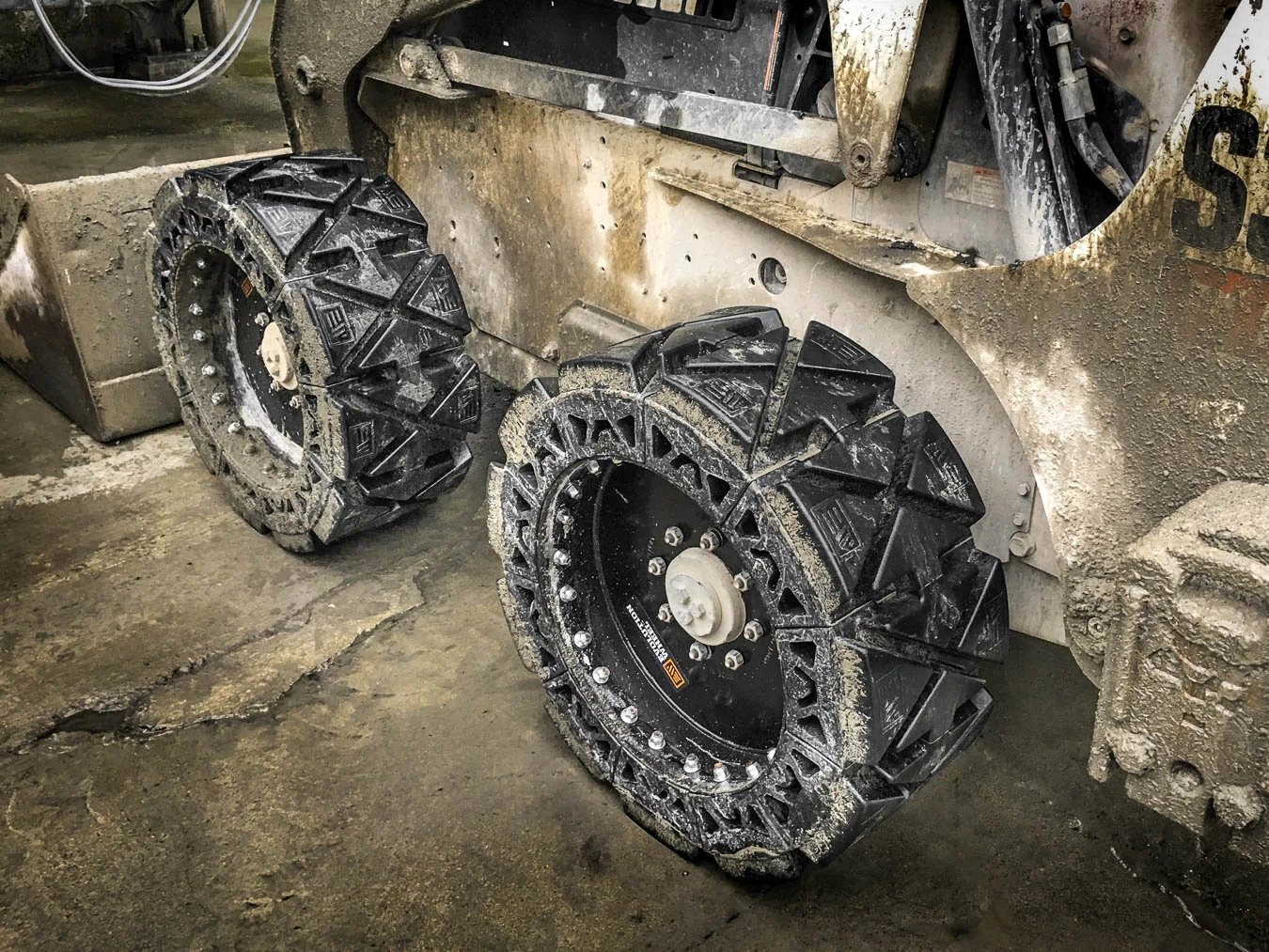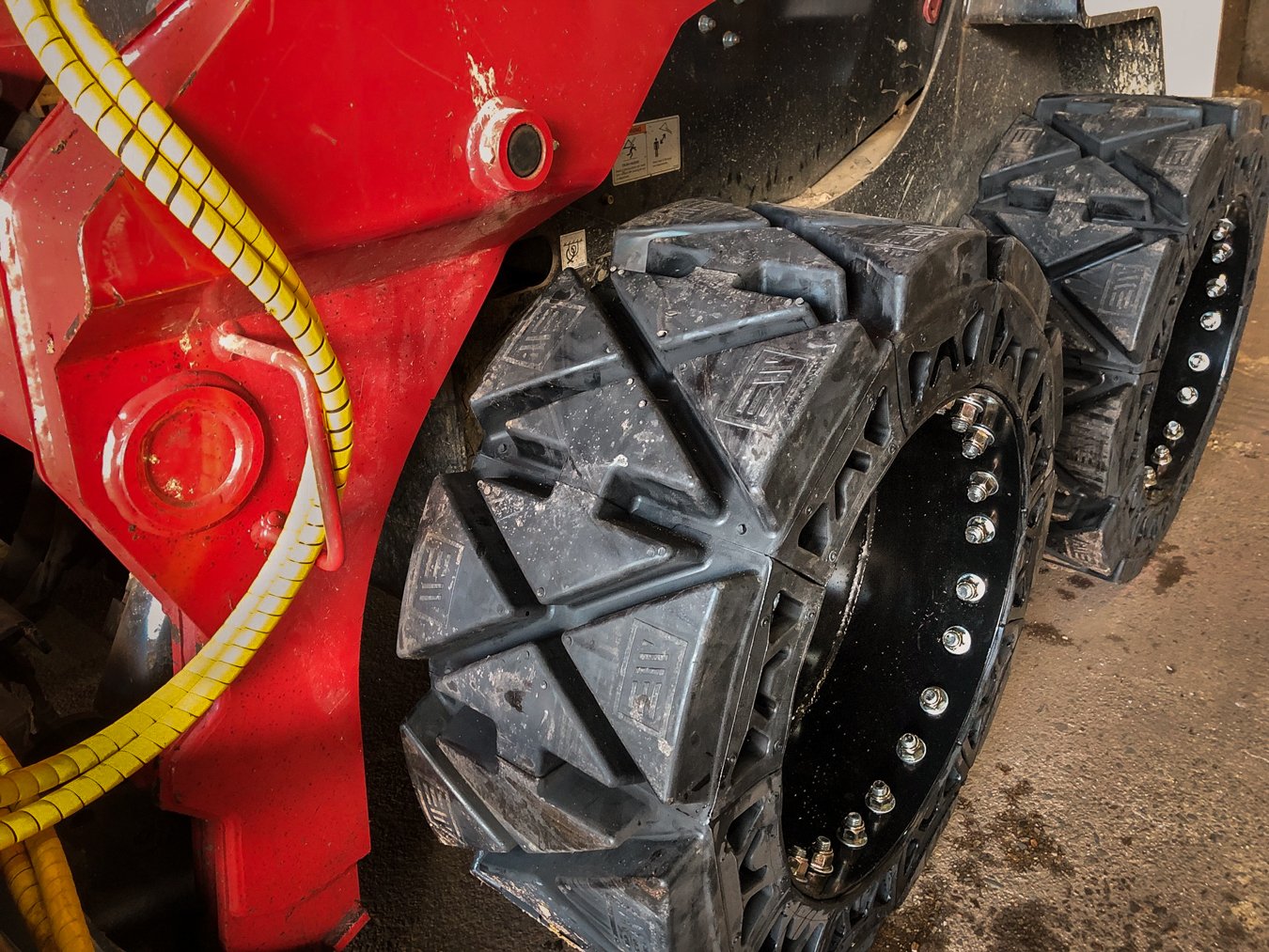Minimize Construction Delays with the Right Skid Steer Tires
One way to minimize construction delays is to use the right tires for the job. There are many options on the market nowadays, however, a high-performing, serviceable, flat-free tire will cut downtime on the job site.
Solid Vs Pneumatic Tires Options
The most common skid steer tires on the market are pneumatic, however, solid tires are becoming more popular due to being flat-free. Pneumatic tires are great for lighter work but construction applications are often very rough on tires. Driving over debris and abrasive surfaces causes pneumatic tires to go flat fast. This requires a trip to the tire shop to repair the tire if it isn’t damaged beyond repair. This downtime can be very expensive and isn’t acceptable when you are on a tight deadline.
Solid tires don’t go flat, eliminating the downtime caused by flat tires. While solid tires are initially more expensive than a pneumatic tire, they protect you from constant flats on the job site. This allows you to focus on getting the job done.

Look For High-Performance Options
Determining the most suitable tire for you is imperative for productivity. If the tires don’t have the tread longevity you need or the traction you need then it may not be worth the investment. When looking for a solid option for your skid steer you should be looking for tread pattern, tread depth, aperture design, and rubber compound.
Determining the tread pattern you need is important to get the right tire for the job. Hard surfaces are most common in construction applications; therefore, a hard surface option is the way to go. Hard surfaces are abrasive and chew through rubber quickly. Using a tire that is designed for these applications is critical to getting the highest ROI on your tires. When it comes to hard surface tires, the more surface area, the longer it will last.

The next thing to look for in a tire is the tread depth. Tires with larger treads will typically last longer. One thing to avoid is a tread that has a center wear bar. A center wear bar is structurally necessary when the lugs on the tire are too small, but they lose traction when they are 50% worn.
Apertures in the rubber are needed to allow the tire to compress. Compression in a tire allows for better traction and a smoother ride. Many solid tires on the market have a reputation for being stiff and uncomfortable to drive. Circle and oval aperture designs are the cause of this. They don’t allow the tire to compress enough. Apertures like the specially designed core geometry on the EWRS-HS series are designed to compress like a pneumatic tire. Providing a comfortable smooth ride even when carrying heavy loads.
The last step is to see what compounds the tire is using. Quality compounds in a tire will cost more but will last longer and won’t have chunking issues. The main compounds to inquire about are the grade of natural rubber, carbon black, and mixing compounds.
Benefits of a Serviceable Tire Option
There are three main ways to mount solid tires on a rim. Pressed-on, chemically bonded, and segmented. Pressed-on tires can fail over time as the rubber slips on the rim. As the tire wears this happens more frequently and likely in wet conditions. Chemically bonded mounts won’t slip like a pressed-on mount but once the rubber is worn the entire wheel needs to be replaced.
A tire like the EWRS-AT and EWRS-HS series solid skid steer tires are designed in rubber segments that are bolted into the rim. This allows the operator of the machine to change out segments if they get damaged within minutes on the job site. The only tool needed to change a segment is a wrench, eliminating trips to the tire shop.
Related Pages
If this page was informative, check these out:


.jpg?width=1350&height=1013&name=BOBCAT%20S570%20EWRS-HS%20(2).jpg)
